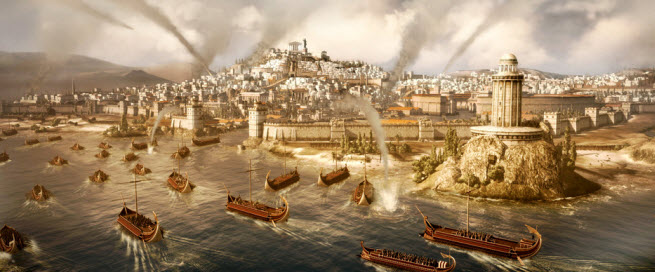Conclusion
By far, the positives outweigh the negatives in this ambitious game. I’m glad that Creative Assembly shot so high with its design, and I’m hoping that some of the performance glitches will be improved with patches.
I think that hardcore gamers — including any fans of the Total War, Civilization, and Age of Empires games — will love this title. It’s a little heavy on the violence (particularly in the victory cinematics, where one army vanquishes another), but there isn’t much actual bloodshed. It’s also a little complex for younger students, so don’t expect this to be a great history-teaching tool for elementary schoolchildren. In that respect, the teen rating is quite appropriate.
I’ve played many games in this series, including Shogun: Total War and Total War: Rome, and I have been amazed each time by the improvements in gameplay and graphics. This title is the most impressive yet, and I can easily see someone sinking in hundreds of hours — without running into constant reruns of gameplay or visuals.
For those who want more action, you can immediately buy the downloadable content, the Greek States Culture Pack, which includes Epirus, Athens, and Sparta. The potential for expansion is mind-boggling, and it reminds me of the expansions for the Age of Empires games, which also taught history. Give Rome II a try. When it comes to combining strategy and tactics, all roads lead to Creative Assembly.
Score: 90/100
Total War: Rome II was released on Sept. 15 on the PC. The publisher provided GamesBeat with a download code for the purpose of this review.
The title won’t run on just any PC. It is playable on Windows XP, Windows Vista, Windows 7, and Windows 8. It requires a PC with a minimum 2-gigahertz Intel dual-core processor or a 2.6 Ghz single-core Intel processor; 2 gigabytes of RAM; a 512 megabytes graphics card with Direct X 9.0c compatibility, 35 gigabytes of hard disk space, and a screen resolution of 1024 x 768. The recommended spec is for Windows 7 or Windows 8; second-generation Intel Core i5 processor or better; 4 gigabytes of RAM; a 1024 megabyte graphics card with DirectX 11 compatibility; 35 gigabytes of hard disk space; and a screen resolution of 1920 x 1080.
VentureBeat's mission is to be a digital town square for technical decision-makers to gain knowledge about transformative enterprise technology and transact. Learn More

















